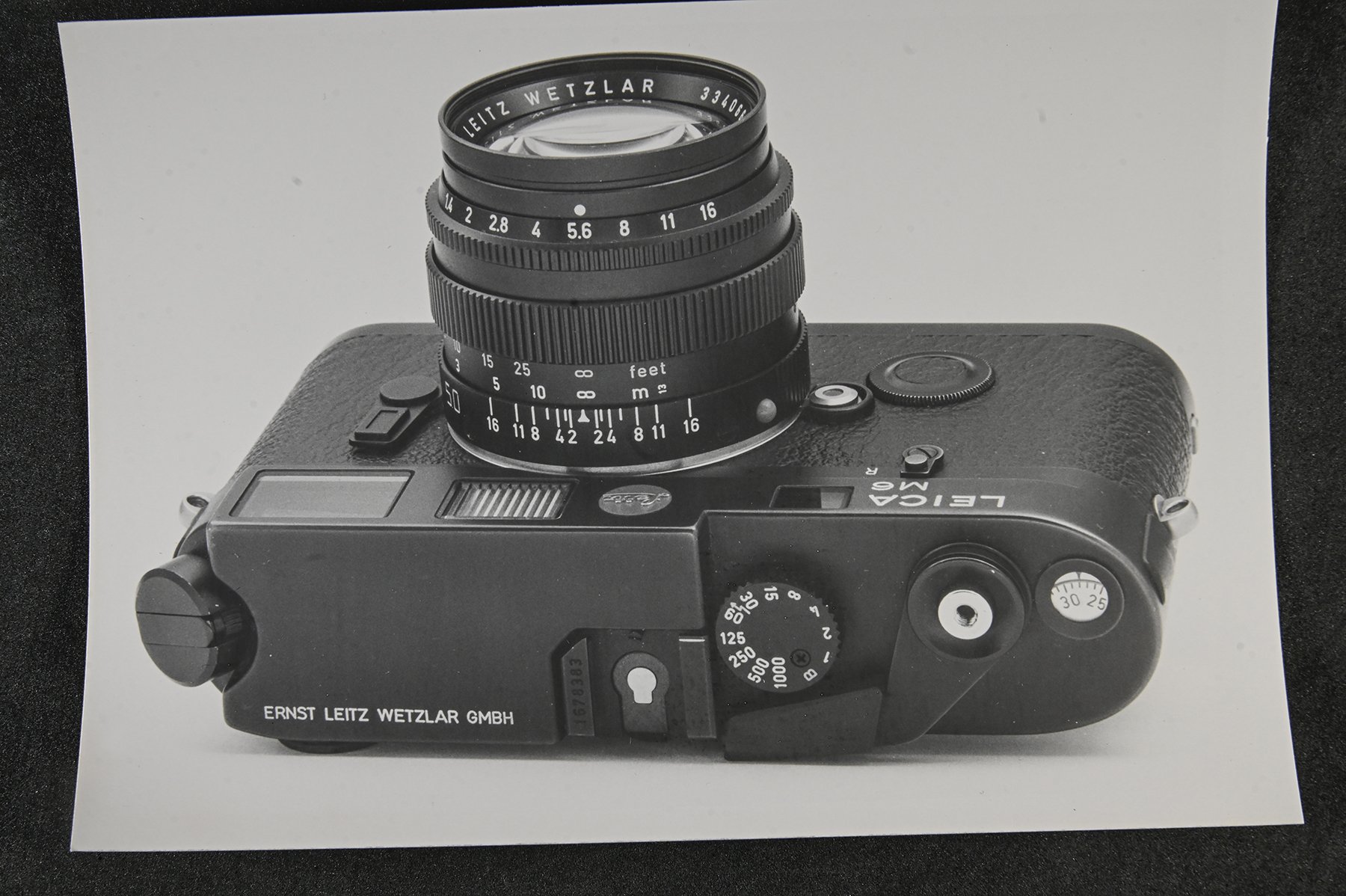The Glorious Leica M6 2022
Leica brought forth the landmark Leica M6 in 1984, the first Leica to combine the classic M form factor and iconic multi-frame range/viewfinder with a state-of-the-art, all electronic TTL metering system with no moving parts. The original M6, later dubbed the “Classic,” was not the first Leica M with built-in TTL metering. That honor goes to the ponderous, inelegant Leica M5 of 1971-1975 that suffered from poor sales (but is now considered by some a de facto classic), and the cute, compact, and competent Minolta made Leica CL of 1973, which was more successful, but often dismissed by diehard Leica fans as an NRL (not a real Leica).
Both the M5 and the analog CL metering systems use a “semaphore type” arm that positions a CdS meter cell directly in the light path when you wind to the next frame, and instantly retracts it an instant before the shutter fires when you press the shutter release. The all-electronic “off the shutter” metering system in the M6 is far more sophisticated and is considered cutting edge even today. It employs a technically superior SPD (Silicon Photodiode) cell that’s mounted near the top lefthand area of the inner body chamber and is positioned behind a tiny convex lens that directs light coming through camera lens onto a light gray 12mm metering spot in the center of the first shutter curtain. This metering area corresponds to about 13% of the full frame format, covering between 23% and 66% of the field of view depending on the lens in use. At ISO 100 the meter has an impressive working range of EV0 to EV20 (some claim it can get down to EV-1) and can handle film speed settings from ISO 6-6400. Manual metering readouts in the finder consist of two red delta-shaped LEDs, one pointing to the right, the other to the left. As you turn the shutter speed dial and/or lens aperture ring to take a reading off the subject, the correct exposure is indicated when both LEDs illuminate at the same intensity. This system allows precise metering to within +/- ½-stop without using a delicate meter needle.
Other than the built-in meter, the M6 Classic’s features closely parallel those of the meterless Leica M4-P of 1981, including a top and bottom made from lighter, less expensive zinc instead of the traditional brass, a simplified rangefinder mechanism (like the one in the M4-2) and a 6- frame-line viewfinder with frame lines displayed in pairs; 28 & 90mm, 35 & 135mm, and 50 & 75mm in the 0.72x magnification version. Over its astoundingly long 18-year production run, the M6 was offered with viewfinder magnifications of 0.85x, 0.72x, and 0.58x, and in no less than 32 special editions including a display cutaway! In 1998 the M6 Classic was replaced by the M6 TTL which added TTL flash metering circuitry compatible with dedicated flash units such as the SF-20. As a result, the M6 TTL body is 2mm taller than the M6’s. Only one M4-P feature found its way into the new Leica M6 2022—the shutter speed dial, which turns in the same direction as the exposure readout LED “arrows” in the finder—the M6 Classic’s dial turns in the opposite direction.
The new Leica M6 2020: The ultimate user-collectible
Perhaps the best things about the re-released Leica M6 are that it hews very closely to the original M6 of 1984, looks almost identical except for a few agreeable cosmetic revisions, and includes some small but significant technical upgrades. Here are some lightly edited excerpts from Leica’s official announcement of October 24, 2022:
For the most part, Leica kept the same structure as the M6 with several small but significant upgrades… a redesign of the top and bottom covers, originally die-cast zinc, now made from machined brass and fortified with a scratch-resistant black lacquer. The rangefinder has been modernized using the same 0.72x viewfinder magnification and enhanced coated prisms and optical elements used in the currently available MP and M-A (Type 127) cameras. The ISO dial has been refreshed with new electrical components. Two other upgrades include a new red LED dot in the center of the metering display that lights up to confirm the correct exposure (in addition to the original metering arrows) and a new battery warning indicator. The reprised M6 is only available in black, rather than the option of silver as before. Lastly, the iconic red dot reads Leitz rather than Leica, just like the original. It’s worth noting that the packaging of the new Leica M6 2022 is based on the original packaging from 1984 but required a slightly larger box to accommodate “the increased volume of documents.” To accomplish this “simple” change, Leica had to find a new supplier to make the box to their precise specifications. Another nice touch is the carrying strap supplied with the new camera, which is now embossed with raised Leica lettering and is made entirely of high-quality genuine leather. The new black leatherette covering, the same type used on digital M’s, complements the new black lacquer perfectly, giving the camera a strikingly distinctive but still decidedly vintage look.
The Leica M6 2022 is officially priced at $5,295.00, body only, but as you probably guessed, there’s already a long waiting list. Overall, it’s a lot more than a mere replica, and it couldn’t have happened to a nicer camera! Kudos to Leica for bringing it out and for its punctilious attention to all the details, Leica’s defining ethos for nearly a century.
Heartfelt thanks to James Lager and to Leica USA for providing the images used in this article.






